The Last Witch Hunter Case Study
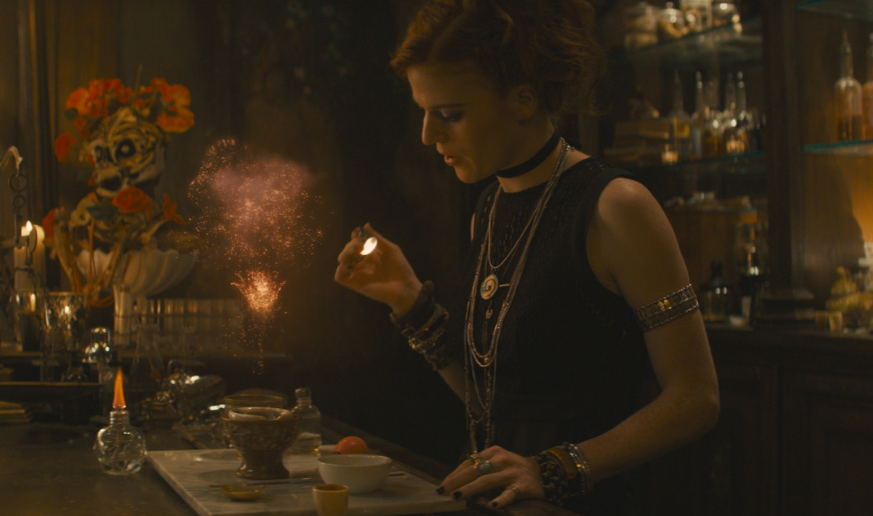
Case Study
Learn how Image Engine brought its magic touch to The Last Witch Hunter, contributing a diverse array of visual effects wizardry that brought the project to completion.
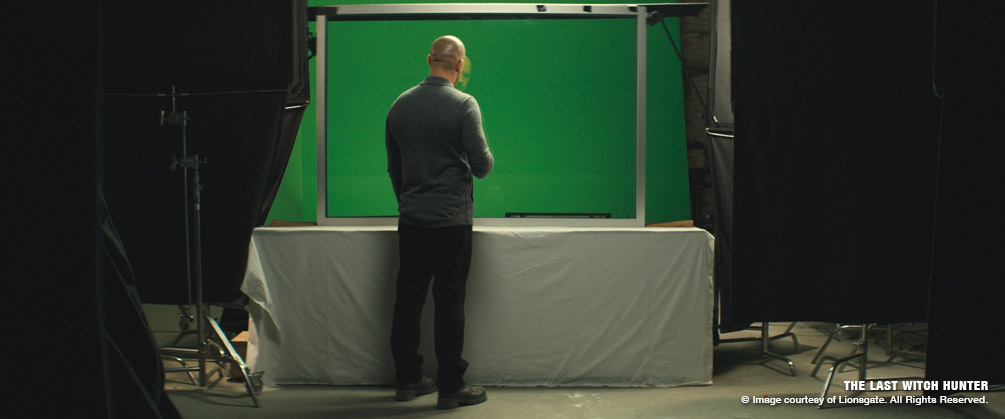


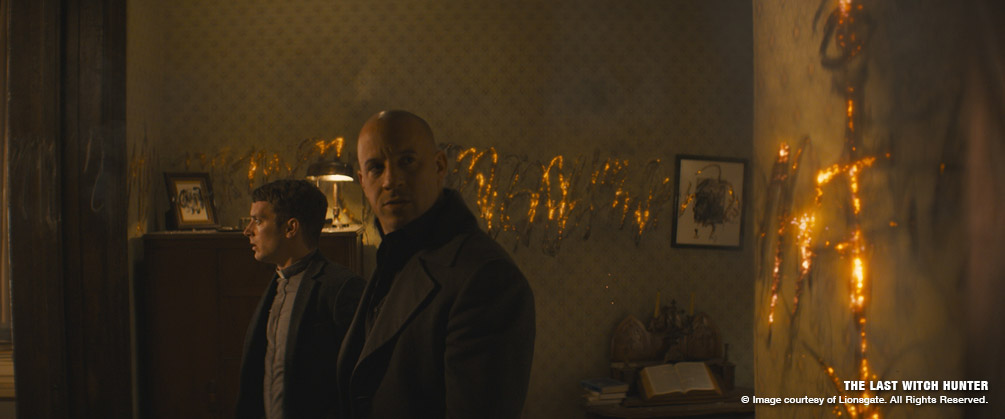


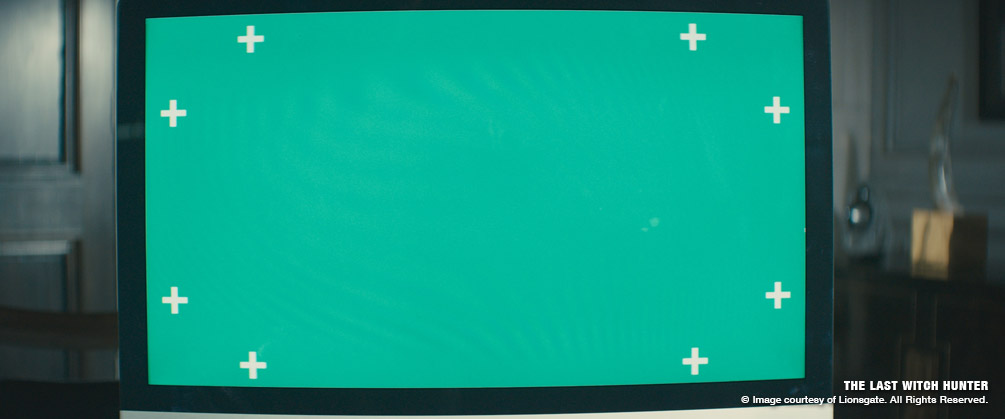
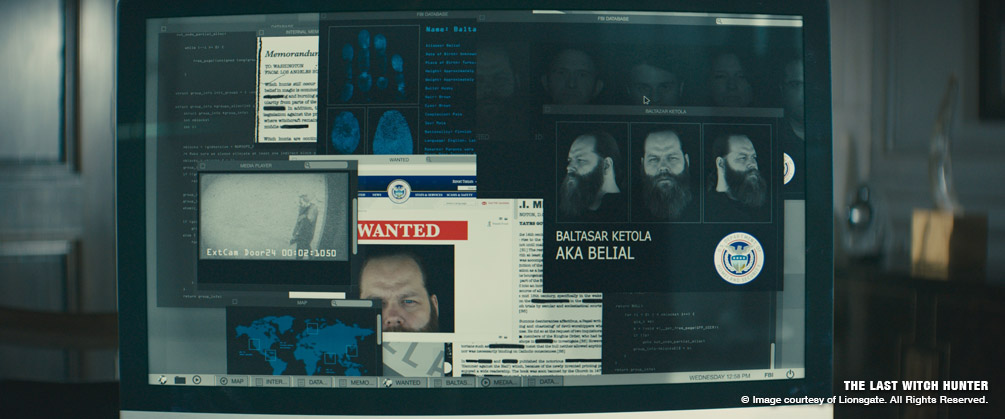
Image Engine has established a reputation for working on some of the most exciting visual effects in recent years, delivering believable characters and action-packed sequences of such vivid beauty that they almost burst from the screen.
However, not every project requires one thousand shots of a central hero character like Chappie, or stunning CG sequences like those witnessed in Teenage Mutant Ninja Turtles. Some projects just need those finishing touches that bring their last 5% to life. Such was the case with The Last Witch Hunter, a project that saw Image Engine flex its generalist skillset.
“The Last Witch Hunter team chose to extend their production schedule in order to add extra visual effects elements,” explains Shawn Walsh, visual effects executive producer. “They were looking for a studio that could handle a lot of varied creative challenges in a short span of time. Image Engine was called in at the 11th hour to provide this work.”
Read on to find out how Image Engine helped build out the mystical world of The Last Witch Hunter, all without the aid of a preparatory visual effects process.
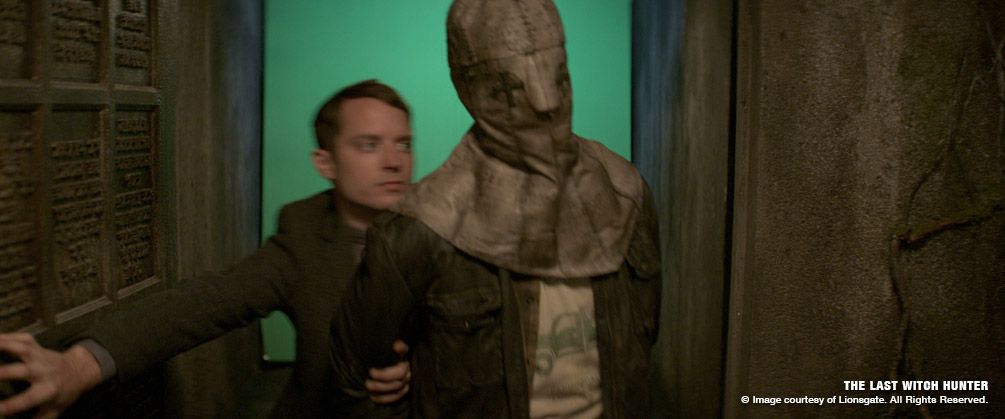
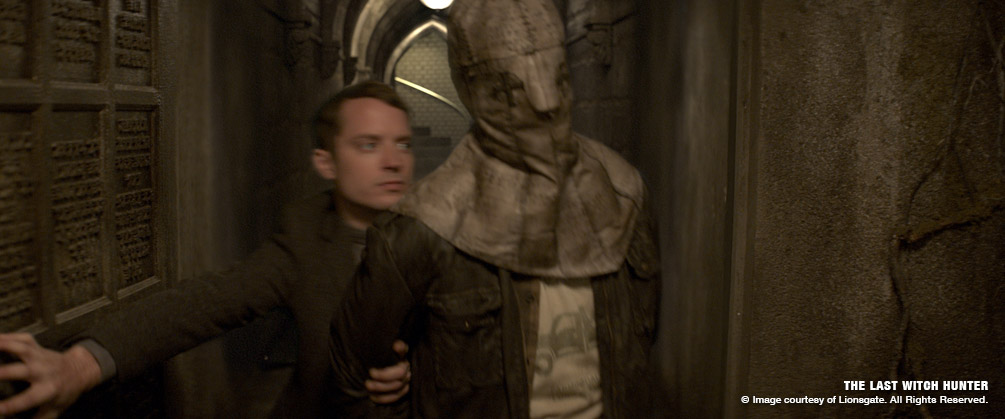
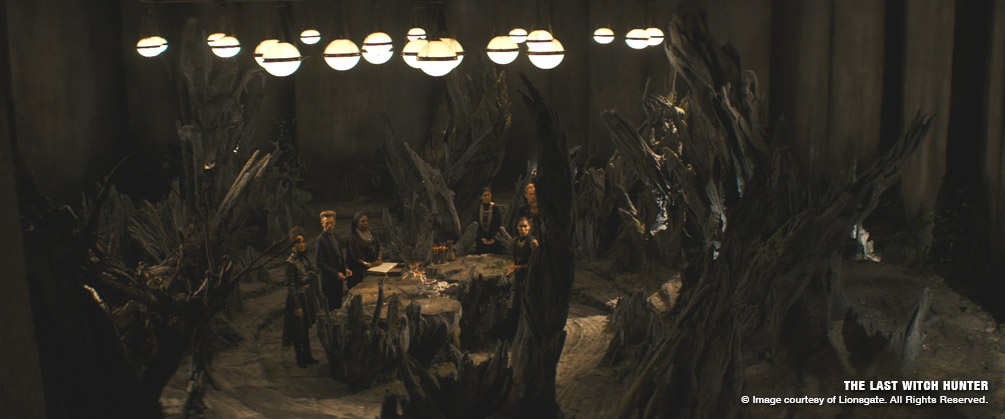
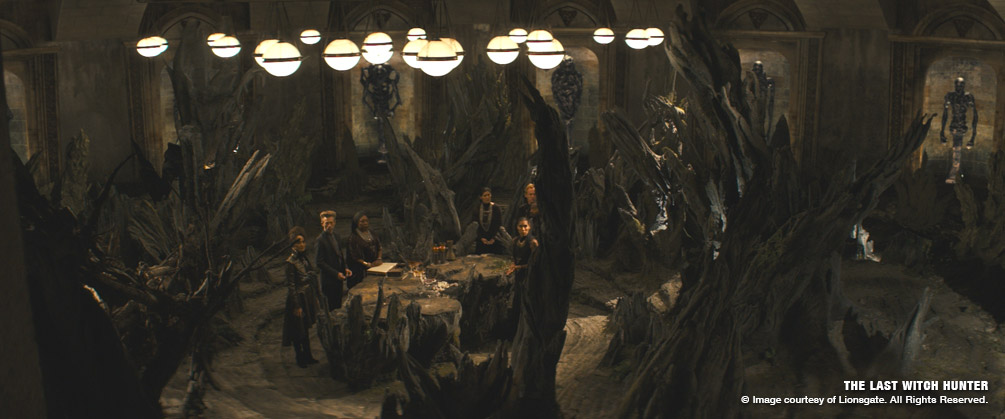
Adding Depth
One of the most challenging components of Image Engine’s work on The Last Witch Hunter involved the CG set extension of the witch council’s chamber, which comprised 40 of the team’s 148 shots.
As with many of the shots throughout the project, no visual effects enhancements were originally planned for the witch council set. “The production realised that what they had shot on the day for the chamber just wasn’t grand enough – they wanted something bigger and more impressive,” explains Mat Krentz, visual effects supervisor. “We opened the room up more, and added a CG set extension consisting of columns, alcoves and sentinel-like monster statues. That meant a great deal of roto work, given there was no green screen on the set.”
The challenge was further enhanced in that the sequence was shot in a room surrounded by shadow. “The room was extremely dark, so it took a lot of work to define the features of the room and create a drop off point where our extension would begin,” says Shane Davidson, compositing supervisor.
As there were few moving camera shots, the team could not rely on effects such as parallax to communicate the size of the room. Instead, Image Engine needed to employ creative tricks to convey the cavernous nature of the space: “We tried all sorts of things like adding some really nice architectural lighting” says Davidson. “After that, the compositing team tuned everything to create a larger sense of space.”
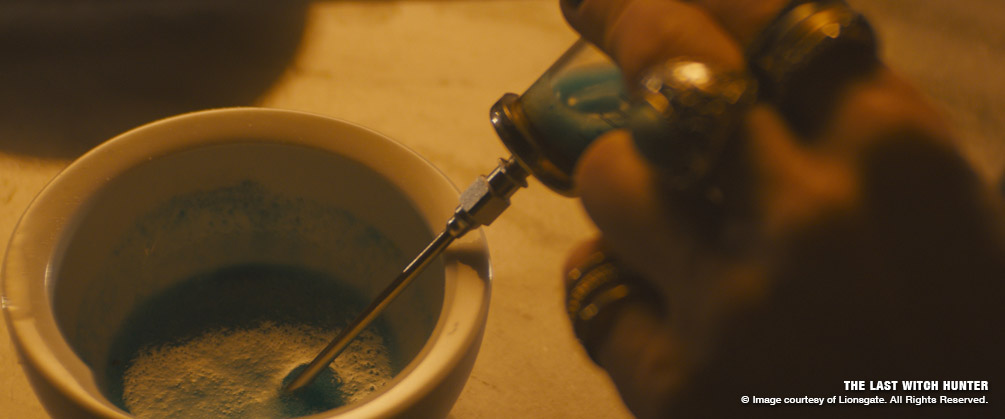
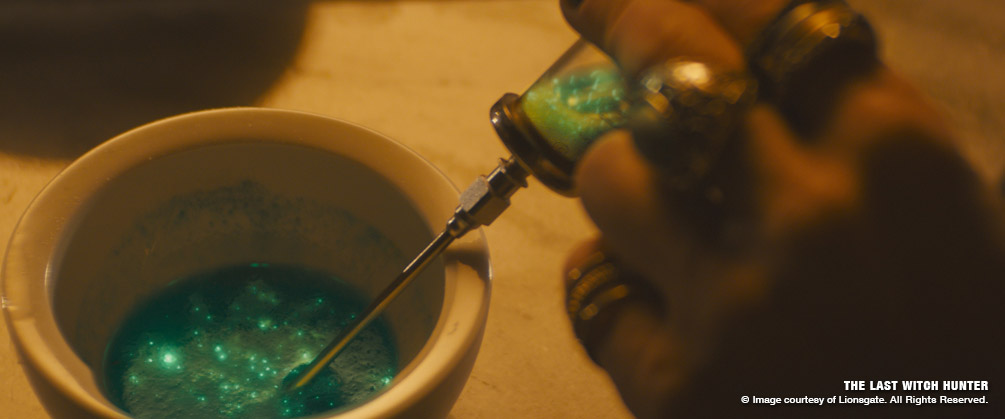
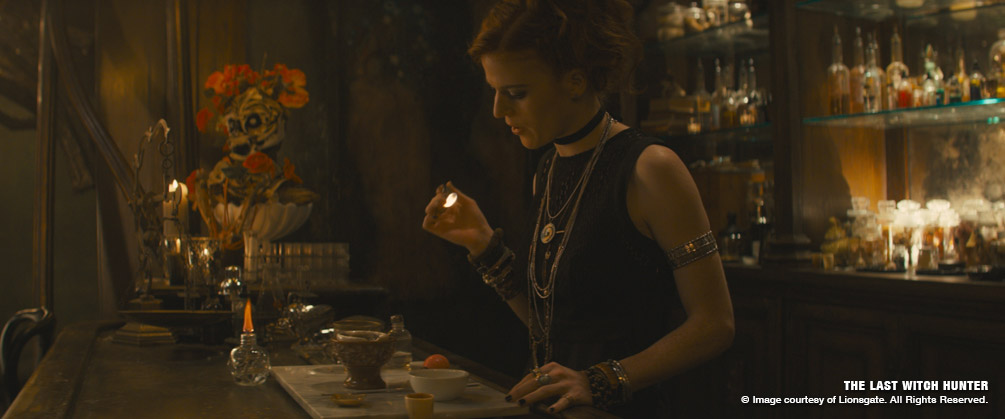
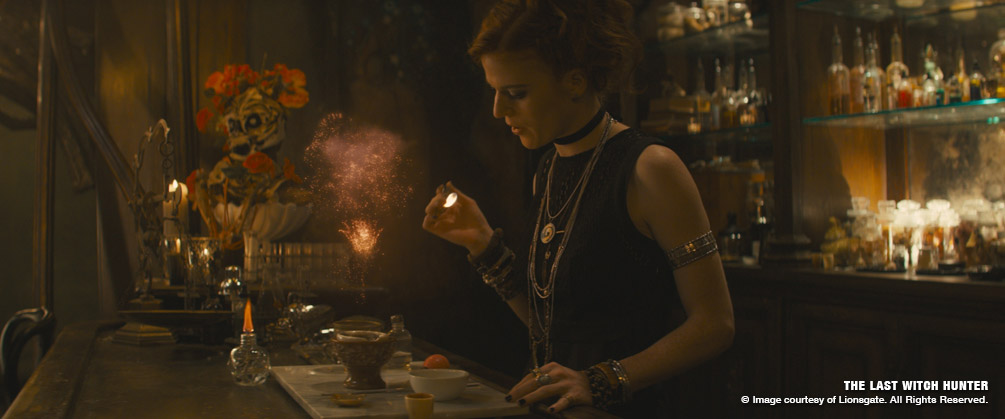
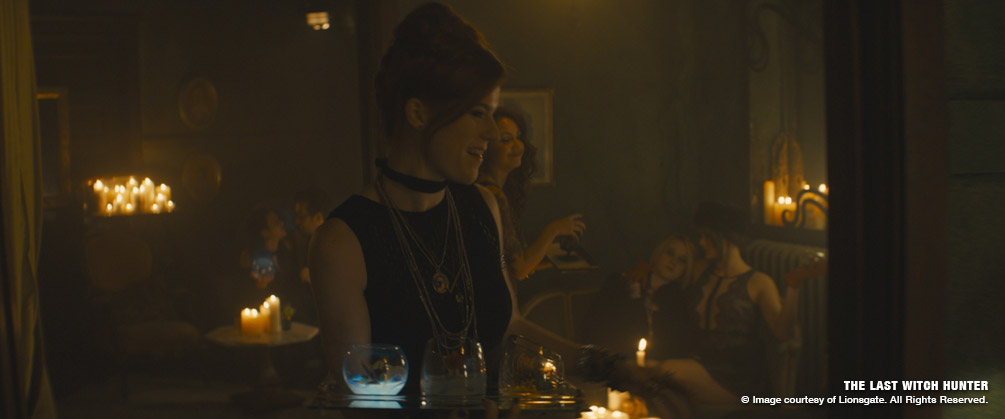
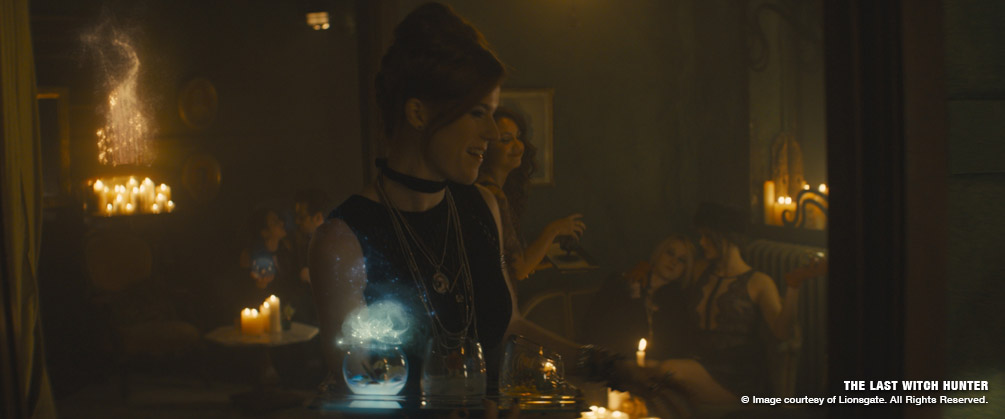
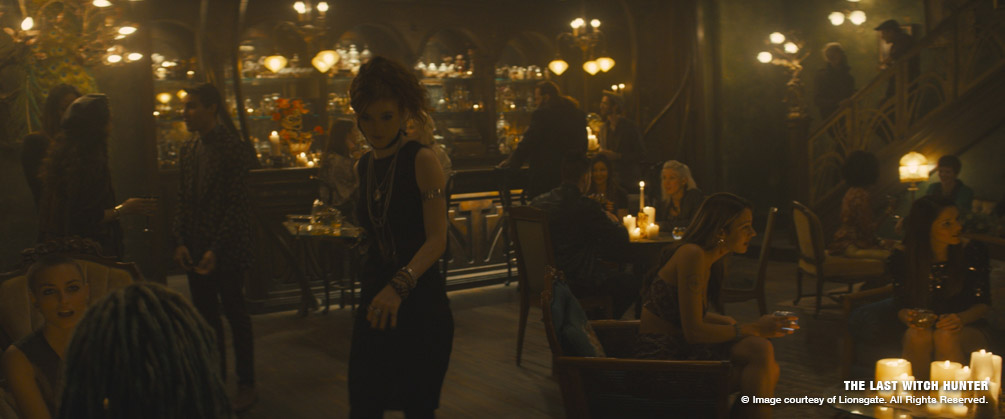
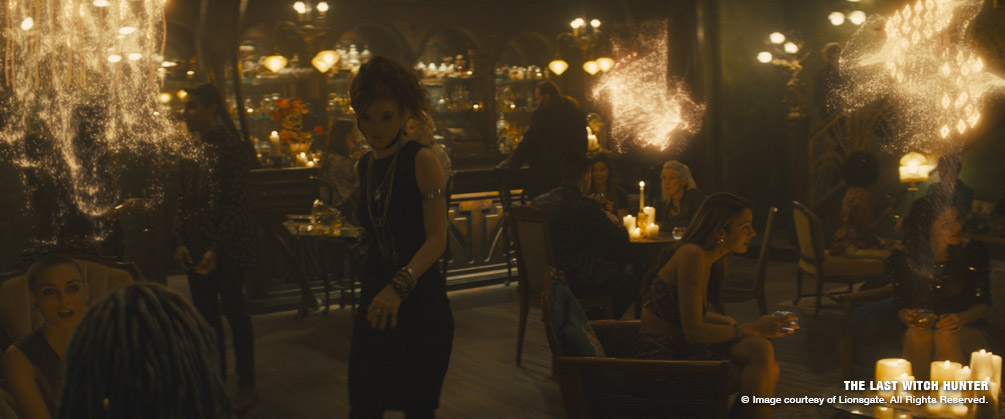
A Kind of Magic
Enhancements to plate photography weren’t just rooted in the physical world – effects of a more supernatural variety were also required. From fiery writing appearing on an apartment wall to the charms and enchantments that add life to a witches’ parlour, Image Engine needed to create a range of effects that punctuated the magical nature of The Last Witch Hunter’s world.
In the parlour scene, effervescent drinks are served to the customers, while glowing, phosphorescent chandeliers float mid-air. The scene did not start out like this, however: “Before the addition of effects, that scene didn’t feel that it had enough magical flair to it,” says Walsh. “We added some embers and sparks, taking colour cues from the environment, and used them to create the magical chandeliers.”
Although some artistic direction felt somewhat contradictory – making something more “magical”, and yet also completely photoreal, for example – Image Engine knew just how to approach the task. “We achieve concepts like that by adding an element of physicality to the magic, inserting it into the shot as if it’s a physical thing and responding to the same forces as anything else would in the scene,” says Walsh.
The Image Engine team also added to an effect previously created by vendor Rodeo FX, who had developed a magical flower sitting within a glass. “This inspired our artist to create a little magical flower on top of the drink as well,” says Krentz. “Our effects animators were really given the opportunity to get creative and play with a variety of looks and ideas.”
Given the unintended nature of these CG elements, their inclusion required a high degree of technical and artistic skill. “Production didn’t capture the HDRIs or lighting information on set as their intention was to just use the plate photography,” explains Krentz. “We solved this challenge by reconstructing a 3D set lighting environment, integrating our CG work using information from the plate alone!”
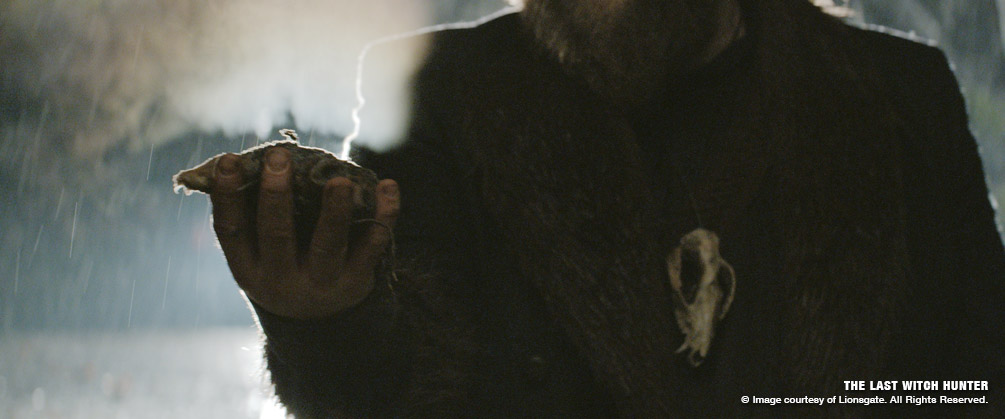
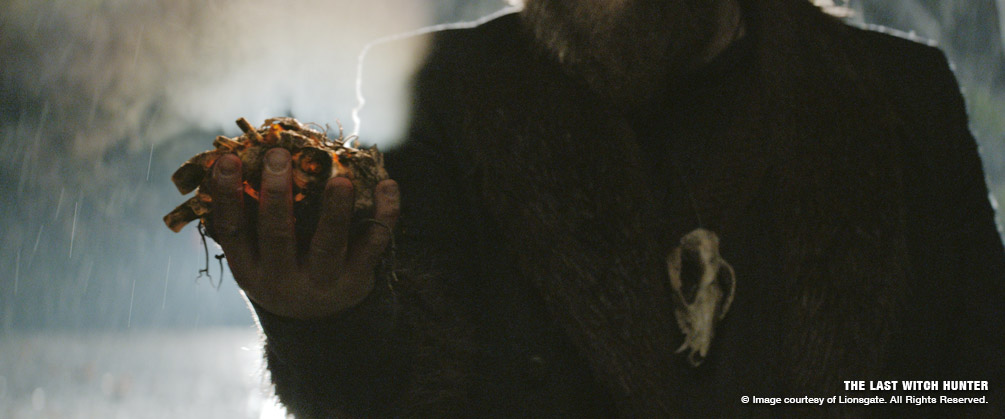
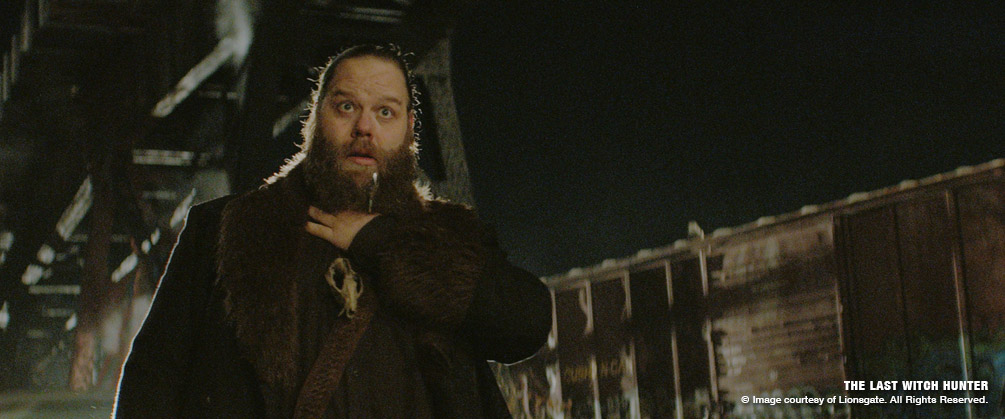
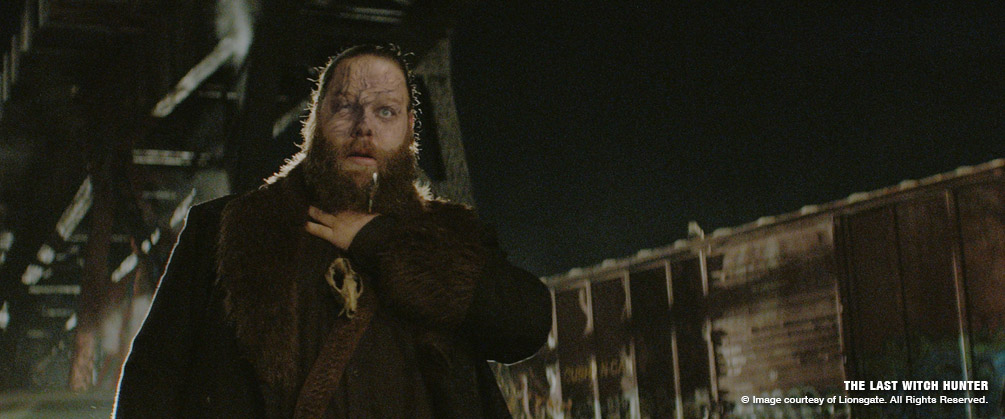
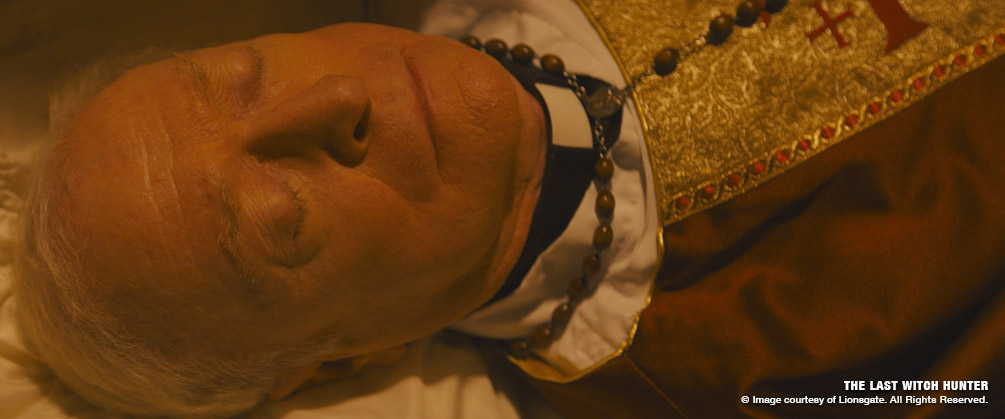
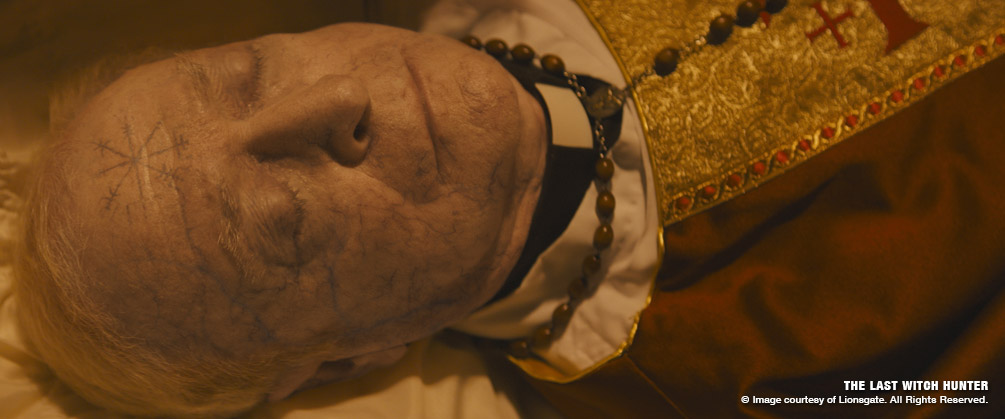
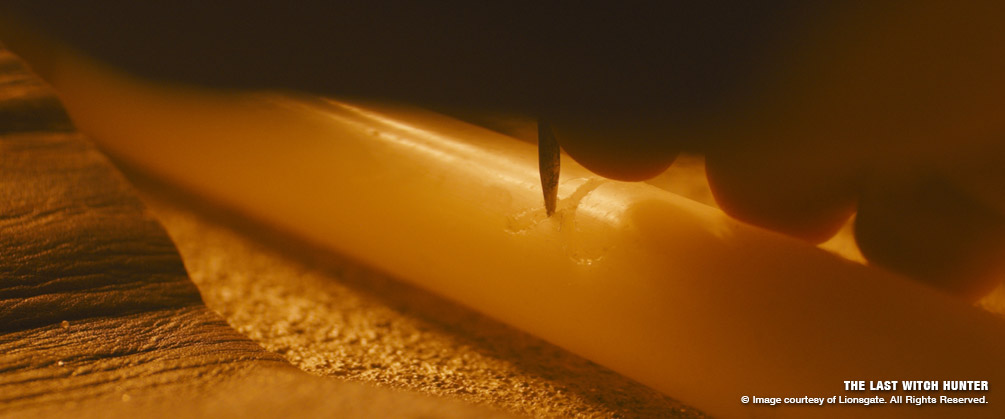

A Deadly Effect
The death of two characters also had to be enhanced by Image Engine to deliver a sense of mystical impact that was otherwise missing in the plate photography.
“For the death of Michael Caine’s character, Dolan, we needed to create an effect that revealed the spell that has been cast on him,” explains Krentz. “As he dies you see his face whiten and tendrils of red with a voodoo graphical design spread across his face. We created this effect using a CG model of Michael Caine’s face, using the textures of the plates to reproject the lighting. We than massaged that with compositing to get the veins to really stand out.”
A similar blend of 2D and 3D techniques was taken with the character of Belial, whose death causes him to revert to his true witch form. “In this universe, the witches are very tree-like and earthy,” explains Krentz. “We created concept art of Belial’s true form, which had a kind of root-like, wood grain look to it. When this was signed off we created a full CG head replacement for Belial, with this wood effect slowly bleeding into the plate photography as he dies.”
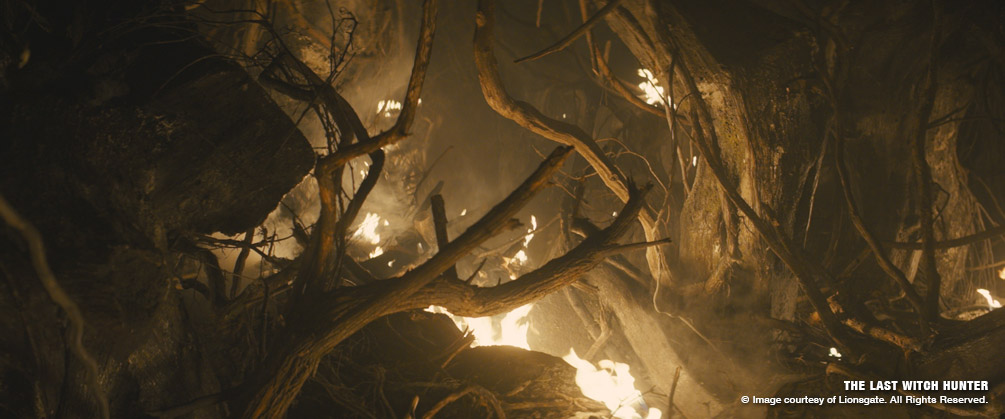

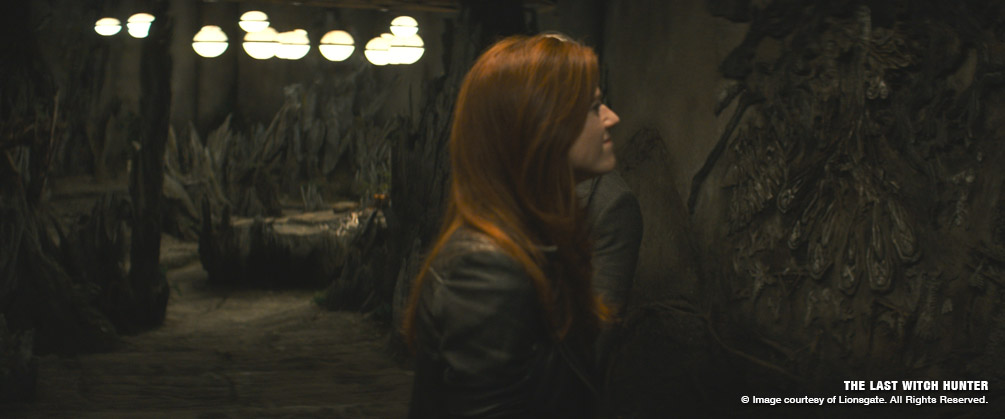
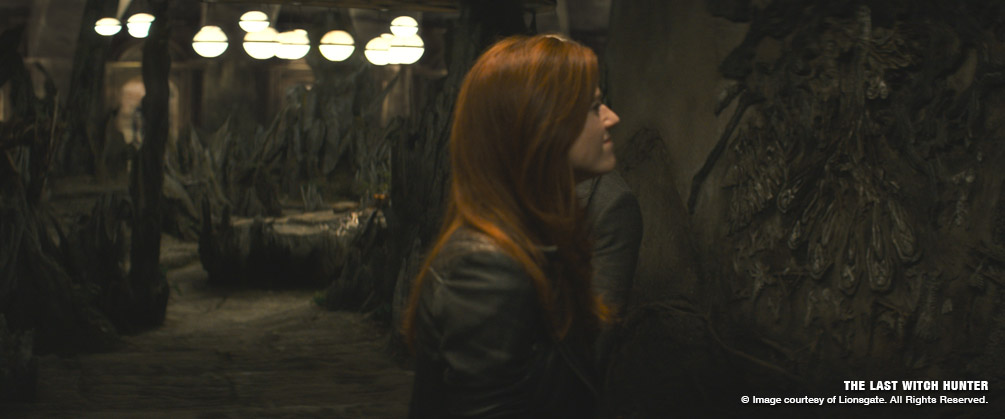
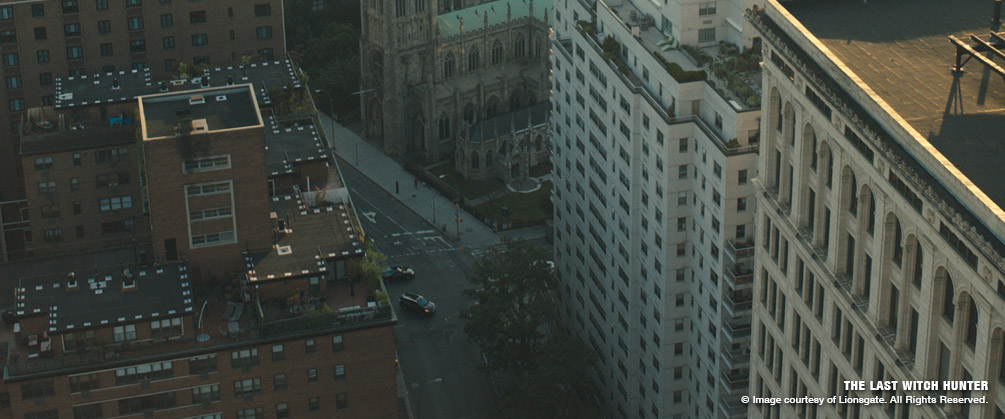
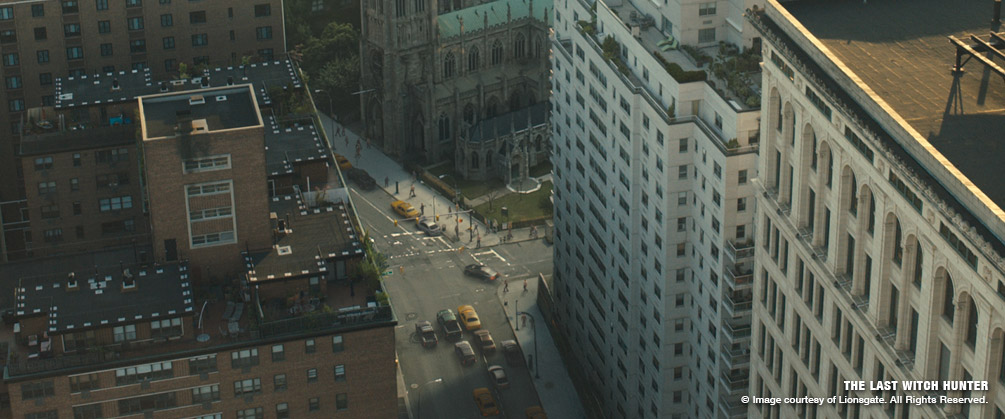
Finishing Touches
Along with these more otherworldly elements, Image Engine completed a diverse array of bread-and-butter visual effects work. This included adding smoke and fire elements to enhance various scenes’ dimension and depth, to turning an unremarkable Pittsburgh street into a busy Manhattan street corner – replete with a CG Aston Martin.
“Image Engine might be known for one thousand shot movies like Chappie, where we carry a central hero asset through an entire show, but our studio is also capable of handling smaller, quirky projects that require a less pipelined process,” states Walsh. “Projects like The Last Witch Hunter showcase Image Engine’s more boutique, generalist side and showcase the depth of the talent at the facility. Yes, we love to handle those Chappie-level projects, but we can also handle projects like The Last Witch Hunter where we must deliver a very broad, creatively challenging scope of work on a smaller scale.
“Working on projects like this and developing our experience is incredibly valuable – it says a lot of the staff here that, even at our current state of evolution, we can still behave like a boutique when it’s required.”

